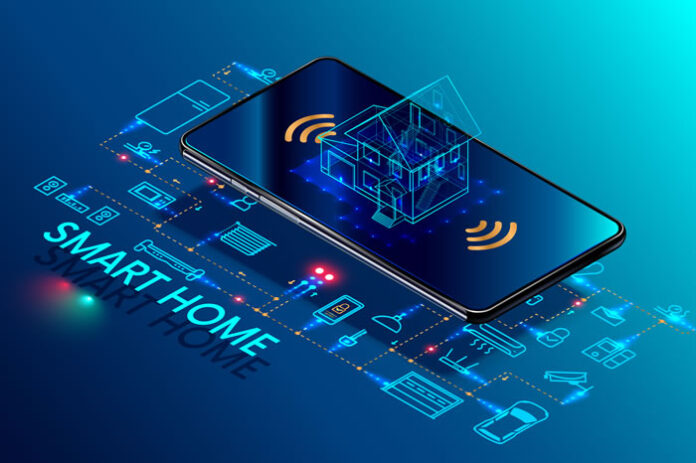It’s 5:30 a.m. and your alarm clock just went off. You usually get up at 6 a.m. but you’ve got a smart clock that did some homework while you were sleeping. It scanned your schedule, found that you have a big presentation at work first thing, and adjusted your wakeup time. Your coffee is already brewed, ready for you to pour that first magnificent cup. Your shower kicks on and is set at the steamy temperature you prefer. You walk outside your smart home to fetch the paper and your electric car is already warming up, fueled by energy from your roof solar panels.
As you walk back in to grab your purse, you notice an unexpected package – delivered by drone – waiting on your door step. It contains medicine you didn’t even know you needed. Earlier, health sensors in your bathroom detected a pending illness and automatically placed the order for you.
Does this sound like something out of a sci fi movie? It does now, but it may be a reality in 10 years. In fact, research shows that 63 million American homes will be “smart” by as early as 2022. But fast forward a decade, and the smartest homes will adapt and “learn” about their occupants and anticipate what they need. Advancements in robotics will provide machines that help with cooking, cleaning, healthcare and more.
At the heart of it all, the data that smart homes collect, analyze and use will transform the houses of the future from random collection of gadgets to truly “smart” homes. Indeed, from home security systems to voice assistants, smart homes are quickly becoming the new standard.
Looking Ahead: A Future of Connectedness
Consumers are expected to spend $123 billion on IoT (Internet of Things) gear by 2021. A variety of technological developments will fuel smart-home technology well beyond what is currently available on store shelves today.
The home-monitoring and security gadgets industry is expected to skyrocket, claiming 22 percent of the smart-home market share by 2023. Smart speakers and lighting equipment are next, at 15 percent and 12 percent respectively. Right now, there are about seven billion connected IoT devices, but this number will take off in the next few years. As it becomes easier to use smart-home technology and the advantages become even more clear, sustained growth will continue.
Here’s a look at what may become standard features in the homes of 2030.
Mobile Robot Security Guards
Right now, the closest things we have to security-oriented robots are stationary smart sensors and cameras designed to detect suspicious motion. But soon, so-called smart robots will be able to keep an eye on your entire home. Through the use of ballbot technology, the robots’ built-in cameras and sensors will scan the home in real time for unusual activity. They will also be able to hear intruders and even smell changes in the air, such as allergens, food burning on the stove, and potentially toxic fumes. If anything untoward is detected, these smart robots can notify their homeowners through an app.
Building the Perfect Routine
Do you like to kick start your mornings with your favorite song? Do you like to wind down for bed at 9:30 p.m. with some dim lights and calming nature sounds? Smart homes can cater to your daily routine by discovering your preferences and automatically playing a certain tune or adjusting your bedroom lighting at night.
In fact, your home could get to know your routine so well that you would not have to even tell it to do anything. Playing your favorite song is one thing. But what if your smart home could turn off the stovetop burner you left on earlier because it knows you are usually not home at that time? Not only would this save you from a home engulfed in flames, it would save you some money on energy bills.
Personal Chef
So-called “kitchen manipulators” can act like sous chefs right in your own home. This smart robot not only tracks dirty dishes and identifies ingredients, but it can open and close drawers, and even make meals for you. If you think you can sneak downstairs at midnight for that leftover piece of pie, think again. Your personal robot chef can even lock the refrigerator door.
Life-Saving Toilets
High-tech thrones have been around for a while now, offering calming music and heated seats. However, the toilets of the future will be able to analyze urine, being on the lookout for abnormalities in color, volume, consistency and frequency. Your toilet will then use that data for detecting potential health problems, including protein and blood deficiencies.
May sounds invasive to you now, but this technology could potentially save your life.
Smart home technology is evolving at a rapid pace. It’s pretty hard to believe that today’s super-connected homes will actually feel antiquated someday. But at the pace with which this new technology is advancing, 2020 may feel like “the old days” before we can blink.
















